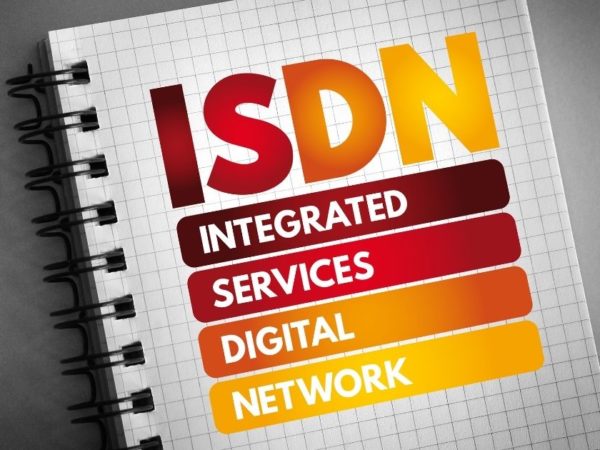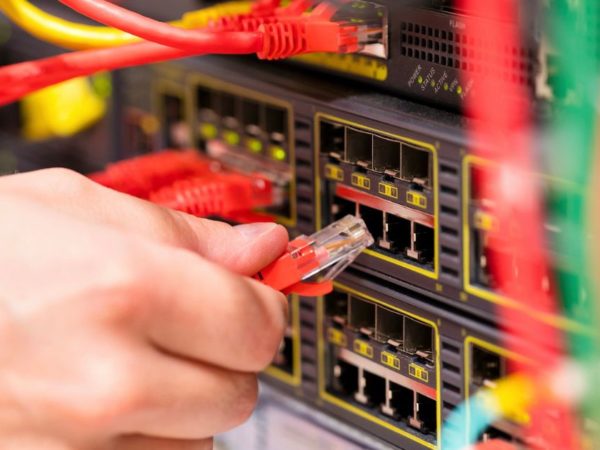Deep packet Inspection is a network traffic analysis method that goes beyond simple header information and looks at the actual data being sent and received.
Network monitoring is a challenging task. It is impossible to see the network traffic that occurs inside copper cables or optical fibers.
This makes it difficult for network administrators to get a clear picture of the activity and status of their networks, which is why network monitoring tools are necessary to help them manage and monitor the network effectively.
Deep packet inspection is one aspect of network monitoring that provides detailed information about network traffic.
Let’s get started!
What is Deep Packet Inspection?
Deep Packet Inspection (DPI) is a technology used in network security to inspect and analyze individual data packets in real-time as they travel through a network.
The aim of DPI is to provide network administrators with visibility into network traffic and to identify & prevent malicious or unauthorized activities.
DPI operates at the packet level and analyzes the network traffic by examining each data packet and its contents beyond just the header information.
<img alt="YouTube video" data-pin-nopin="true" data-src="https://kirelos.com/wp-content/uploads/2023/02/echo/hqdefault.jpg63e1e7156d41e.jpg" height="360" nopin="nopin" src="data:image/svg xml,” width=”480″>
It provides information about the data type, content, and destination of data packets. It is typically used to:
- Secure networks: Packet inspection can help identify and block malware, hacking attempts, and other security threats.
- Improve network performance: By inspecting network traffic, DPI can help administrators identify and resolve network congestion, bottlenecks, and other performance issues.
And it can also be used to ensure that network traffic complies with regulatory requirements such as data privacy laws.
How Does DPI work?
DPI is typically implemented as a device that sits in the network path and inspects each data packet in real-time. The process typically consists of the following steps.
#1. Data capture
The DPI device or software component captures each data packet in the network while it transmits from source to destination.
#2. Data decoding
The data packet is decoded, and its contents are analyzed, including the header and payload data.
#3. Traffic classification
The DPI system categorizes the data packet into one or more predefined traffic categories, such as email, web traffic, or peer-to-peer traffic.
#4. Content analysis
The contents of the data packet, including the payload data, are analyzed to identify patterns, keywords, or other indicators that might suggest the presence of malicious activities.
#5. Threat detection
The DPI system uses this information to identify and detect potential security threats such as malware, hacking attempts, or unauthorized access.
#6.Policy enforcement
Based on the rules and policies defined by the network administrator, the DPI system either forwards or blocks the data packet. It may also take other actions, such as logging the event, generating an alert, or redirecting the traffic to a quarantine network for further analysis.
The speed and accuracy of packet inspection depend on the DPI device’s capabilities and network traffic volume. In high-speed networks, specialized hardware-based DPI devices are typically used to ensure that data packets can be analyzed in real-time.
Techniques of DPI
Some of the commonly used DPI techniques include:
#1. Signature-based analysis
This method compares data packets against a database of known security threats, such as malware signatures or attack patterns. This type of analysis is useful in detecting well-known or previously identified threats.
#2. Behavioral analysis
The behavioral-based analysis is a technique used in DPI that involves analyzing the network traffic to identify unusual or suspicious activities. This can include analyzing the source and destination of data packets, the frequency and volume of data transfers, and other parameters to identify anomalies and potential security threats.
#3. Protocol analysis
This technique analyzes the structure and format of data packets to identify the type of network protocol being used and to determine if the data packet is following the rules of the protocol.
#4. Payload Analysis
This method examines the payload data in data packets to find sensitive information, such as credit card numbers, social security numbers, or other private details.
#5. Keyword Analysis
This method involves looking for specific words or phrases within data packets to find sensitive or harmful information.
#6. Content filtering
This technique involves blocking or filtering network traffic based on the type or content of the data packets. For example, content filtering might block email attachments or access to websites containing malicious or inappropriate content.
These techniques are often used in combination to provide a comprehensive and accurate analysis of network traffic and to identify & prevent malicious or unauthorized activities.
Challenges of DPI
Deep Packet Inspection is a powerful tool for network security and traffic management, but it also poses some challenges and limitations. Some of them are:
Performance
DPI can consume a significant amount of processing power and bandwidth, which can impact network performance and slow down data transfers.
Privacy
It can also raise privacy concerns, as it involves analyzing and potentially storing the contents of data packets, including sensitive or personal information.
False positives
DPI systems can generate false positives where normal network activity is incorrectly identified as a security threat.
False negatives
They can also miss real security threats either because the DPI system is not configured correctly or because the threat is not included in the database of known security threats.
Complexity
DPI systems can be complex and difficult to configure, requiring specialized knowledge and skills to set up and manage effectively.
Evasion
Advanced threats such as malware and hackers may attempt to evade these systems by using encrypted or fragmented data packets, or by using some other methods to hide their activities from detection.
Cost
DPI systems can be expensive to purchase and maintain, particularly for large or high-speed networks.
Use cases
DPI has a variety of use cases, some of which are:
- Network security
- Traffic management
- Quality of service (QOS) for prioritizing network traffic
- Application control
- Network optimization for routing traffic to more efficient paths.
These use cases demonstrate the versatility and importance of DPI in modern networks and its role in ensuring network security, traffic management, and compliance with industry standards.
There are a number of DPI tools available on the market, each with its own unique features and capabilities. Here, we’ve compiled a list of the top deep packet inspection tools to help you analyze the network effectively.
ManageEngine
ManageEngine NetFlow Analyzer is a network traffic analysis tool that provides organizations with packet inspection capabilities. The tool uses NetFlow, sFlow, J-Flow, and IPFIX protocols to collect and analyze network traffic data.
This tool gives organizations real-time visibility into network traffic and enables them to monitor, analyze, and manage network activity.
ManageEngine’s products are designed to help organizations simplify and streamline their IT management processes. They provide a unified view of the IT infrastructure which enables organizations to quickly identify and resolve issues, optimize performance, and ensure the security of their IT systems.
Paessler
Paessler PRTG is a comprehensive network monitoring tool that provides real-time visibility into the health and performance of IT infrastructures.
It includes various features such as monitoring of various network devices, bandwidth usage, cloud services, virtual environments, applications, and more.
PRTG uses packet sniffing to perform deep packet analysis and reporting. It also supports various notification options, reporting, and alerting functions to keep administrators informed about network status and potential issues.
Wireshark
Wireshark is an open-source network protocol analyzer software tool used to monitor, troubleshoot, and analyze network traffic. It provides a detailed view of the network packets, including their headers and payloads, which allows users to see what is happening on their network.
<img alt="YouTube video" data-pin-nopin="true" data-src="https://kirelos.com/wp-content/uploads/2023/02/echo/hqdefault.jpg63e1e71790d17.jpg" height="360" nopin="nopin" src="data:image/svg xml,” width=”480″>
Wireshark uses a graphical user interface that allows for easy navigation and filtering of captured packets, making it accessible for users with various technical skill levels. And also it supports a wide range of protocols and has the ability to decode and inspect numerous data types.
SolarWinds
SolarWinds Network Performance Monitor (NPM) provides deep packet inspection & analysis capabilities for monitoring and troubleshooting network performance.
NPM uses advanced algorithms and protocols to capture, decode, and analyze network packets in real-time, providing information about network traffic patterns, bandwidth utilization, and application performance.
NPM is a comprehensive solution for network administrators and IT professionals who want to get a deeper understanding of their network’s behavior and performance.
nDPI
NTop provides network administrators with tools to monitor network traffic and performance, including packet capture, traffic recording, network probes, traffic analysis, and packet inspection. The DPI capabilities of NTop are powered by nDPI, an open-source and extensible library.
nDPI supports the detection of over 500 different protocols and services, and its architecture is designed to be easily extendable, allowing users to add support for new protocols and services.
However, nDPI is just a library, and it must be used in conjunction with other applications such as nTopng and nProbe Cento to create rules and take action on network traffic.
Netify
Netify DPI is a packet inspection technology designed for network security and optimization. The tool is open source and can be deployed on various devices, from small embedded systems to large backend network infrastructure.
It inspects network packets at the application layer to provide visibility into network traffic and usage patterns. This helps organizations identify security threats, monitor network performance, and enforce network policies.
Author’s Note
When selecting a DPI tool, organizations should consider factors such as their specific needs, the size and complexity of their network, and their budget to ensure that they choose the right tool for their needs.
You may also be interested in learning about the best NetFlow analyzer tools for your network.



